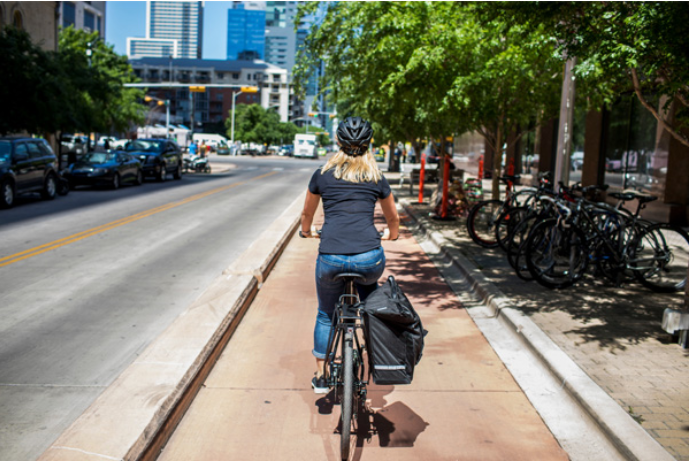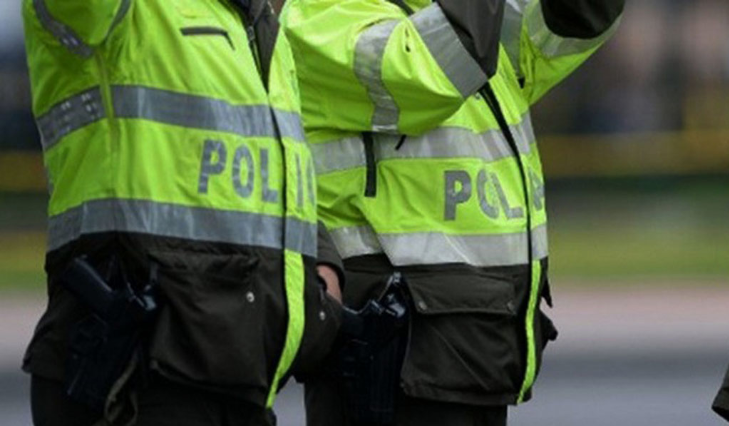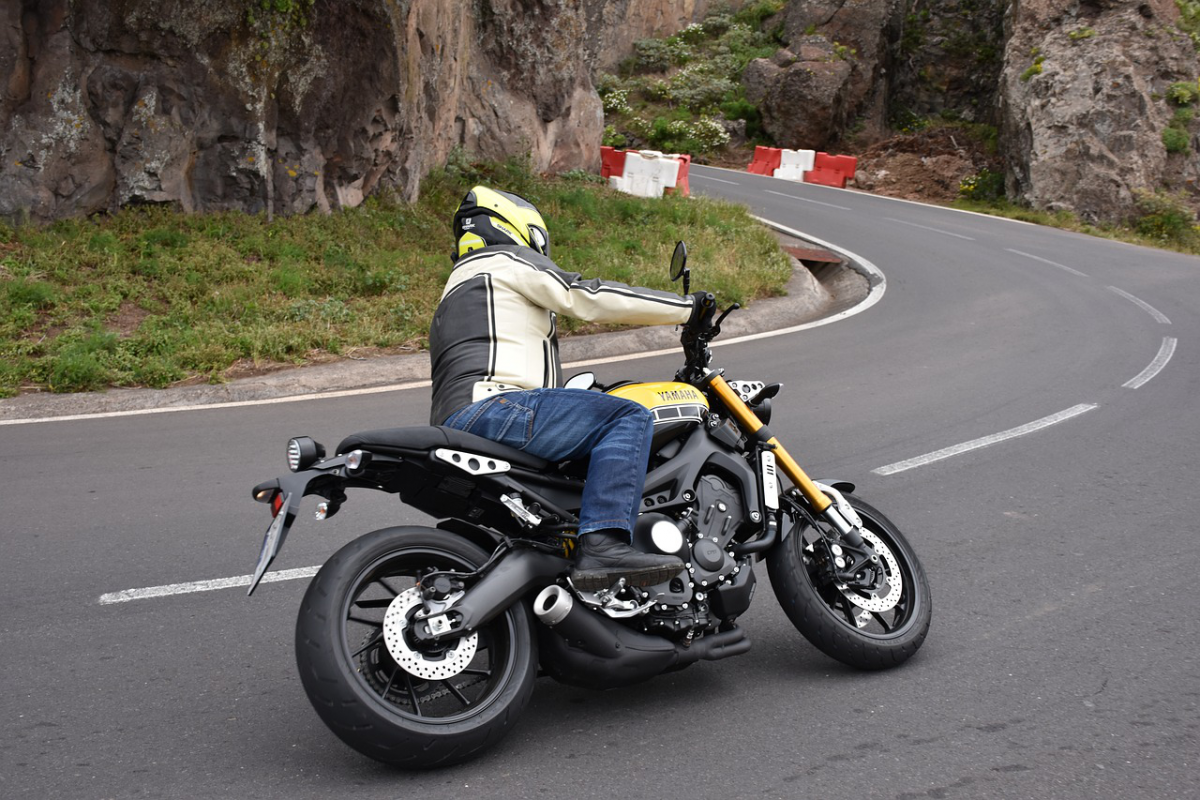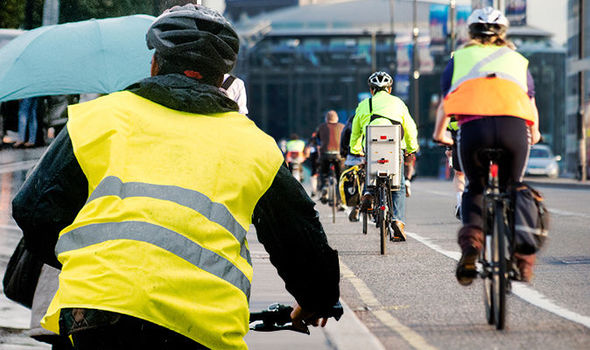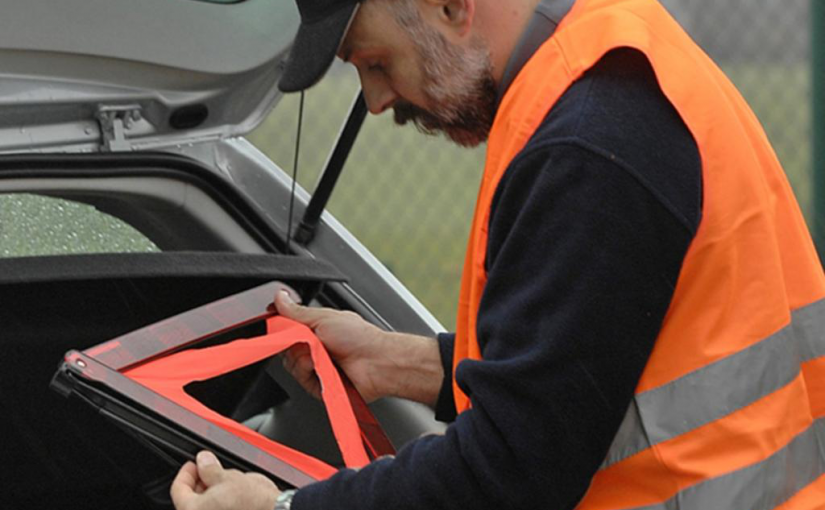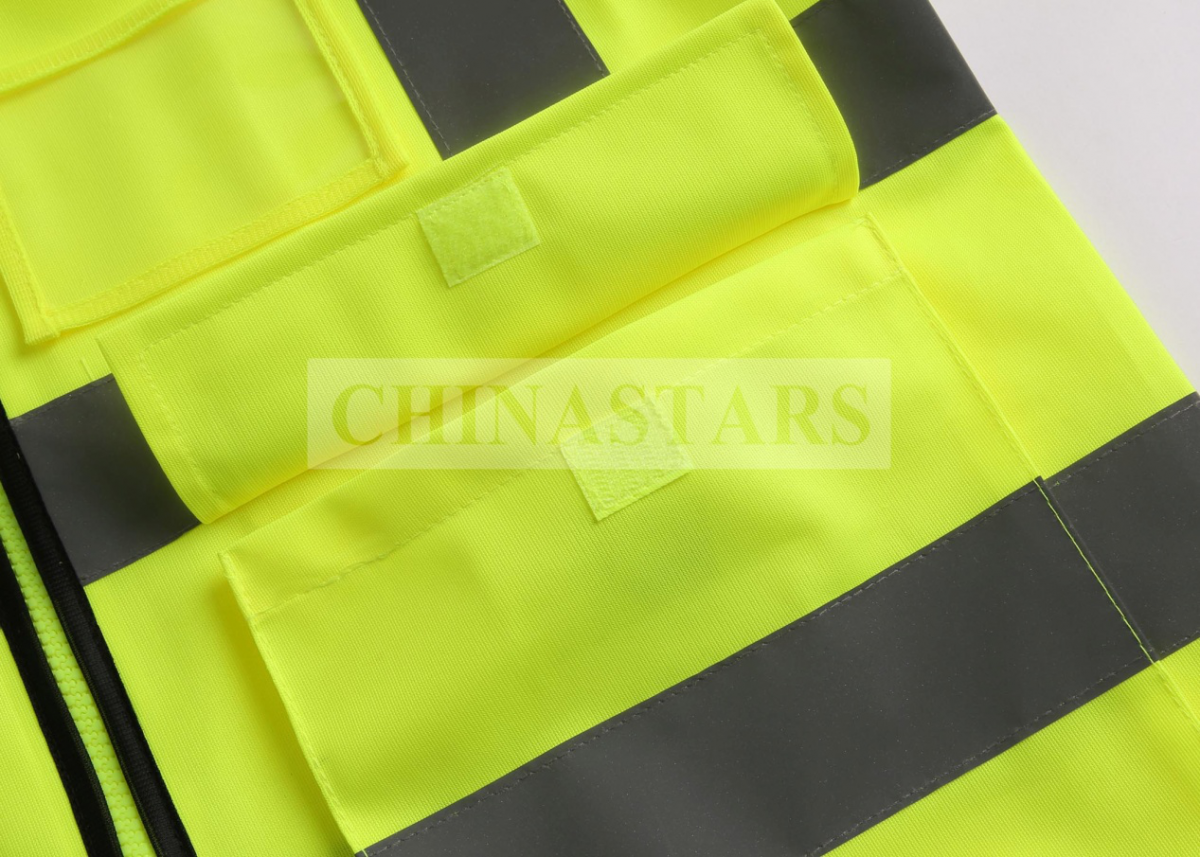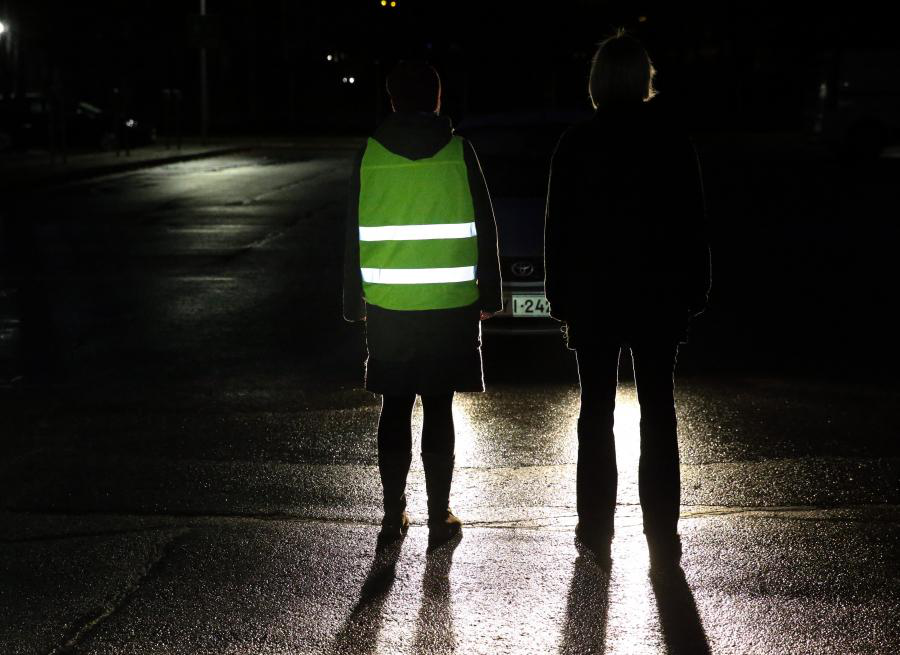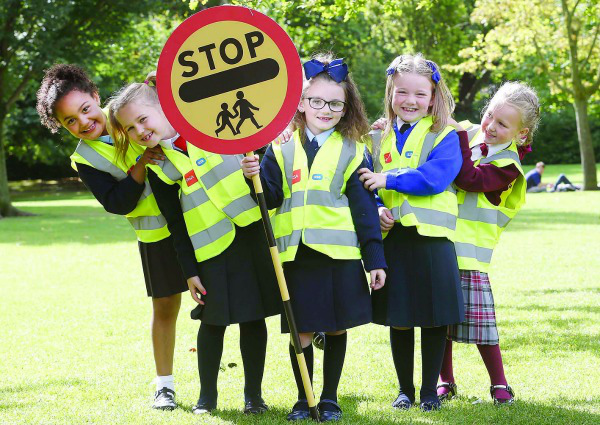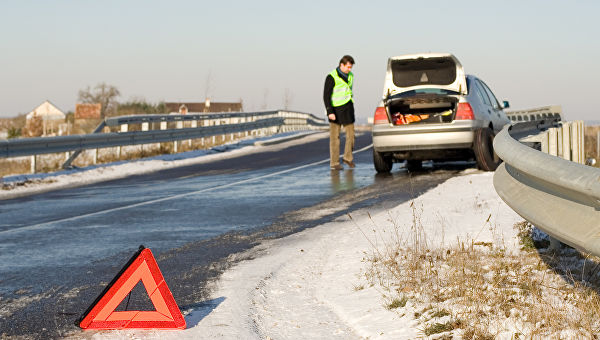Walk into almost any bike shop and you’ll likely find your attention was drawn (quite literally) to a rack of brightly colored clothing. Over in the accessories department, an increasing amount of shelf space is devoted to lights. These products are not new, of course. But their appeal within the cycling community has shot up over the past five years.
Before that, only hardcore commuters and 24-hour racers bought lights. Meanwhile, clothing in bright neon hues, like Pearl Izumi’s Screaming Yellow, has been a durable favorite of the charity-ride set for so long, it’s almost a cliché. But you’d never find it in most style-conscious riders’ kits.
Over the past ten years, on-road fatalities among cyclists have steadily risen to 25-year highs, accompanied by an increasing sense of danger that’s led many recreational riders to wear more fluorescent high-visibility clothing and start using daytime running lights. Even famously core brands like Castelli and Rapha, which favor simple and often dark-hued designs, now make items in bright yellows, oranges, and pinks. The advent of LEDs and improving battery densities have also made lights brighter, more compact, and more affordable than ever. They’re available from more companies, which are increasingly open about selling visibility as a safety aid.
This trend has come about courtesy of a line of scientific research known broadly as conspicuity. A solid amount of evidence suggests that high-vis gear helps drivers see cyclists. But the rise of another, more significant factor in traffic safety—driver distraction—casts doubt on how effective conspicuity is for improving safety. Worse, the increasing adoption of these technologies may lead to even more victim-blaming. It’s worth asking: Is all this gear worth the investment?
Why High-Vis Works
The point of high-vis gear is twofold. First, the brightness helps us stand out from our environment, which enhances our visual conspicuity. This is why construction signs are bright orange. Second, when worn on the right parts of your body, high-vis or reflective clothing helps drivers to intuitively recognize us as humans as opposed to inanimate objects like road signs. This is called cognitive conspicuity. Humans are highly attuned to biological motion; it’s part of how we identify objects.
Rick Tyrrell, a psychologist who runs Clemson University’s Visual Perception and Performance Lab, is among the academic researchers whose insights have informed high-vis clothing decisions from companies like Bontrager. A 2017 study by a researcher in Tyrrell’s group found that fluorescent yellow leg warmers helped drivers identify cyclists from more than three times farther away compared to traditional black leg warmers.
Basically: concentrating fluorescent and reflective elements at locations like the feet and knees, rather than covering yourself head-to-toe in bright yellow, draws attention to the human gait or pedaling motion. This cues the driver’s brain to accurately and quickly identify us as cyclists rather than road signs or mailboxes. In real life, this means a driver can plan and react according to what they see since mailboxes rarely take the lane to prepare for a left turn.
All of this information forms the basis for my setup. I use Bontrager’s Ion 100 R and Flare R front and rear lights ($40 each), which feature various steady and flashing modes, with different intensities for day and nighttime use. (Note that Washington State bans most flashing front lights).
I wear a fluorescent yellow or orange helmet, specifically the Bontrager Specter ($150) and POC Octal ($200). Although your head doesn’t move much while cycling, I figure that having something bright up high is helpful. My Specialized shoes are bright yellow and orange. Bright socks would be an affordable alternative, especially the taller ones that are in style now. I’ve also added reflective decals to both my helmet and shoes and I use Troy Lee Ace 2.0 fluorescent gloves ($36), which I feel might help when signaling turns.
Essentially, I do everything I can to raise my visibility on the roads. I’m also aware that the benefits of wearing high-vis clothing and lights may be marginal.
Why High-Vis Sometimes Doesn’t Work
Fluorescent clothing only helps during the day. Fluorescence relies on reflecting UV light out in the visible spectrum, which makes a fabric color seem brighter. But there are no sources of UV light at night, so in the dark, even the most intensely bright jacket is no more visible than a nonfluorescent version. What’s more, some recent studies have found that, in the daytime, drivers gave cyclists wearing high-vis gear no more passing room than conventionally dressed riders.
In low light, you are better served by reflective gear. Unfortunately, most of what passes for reflective elements on cycling clothing today—small patches, logos, and piping—isn’t large enough to matter. American National Standards Institute recommendations for the minimum size of reflective material for roadside workers is 155 square inches or roughly a 10-by-15-inch rectangle. Even some commuter packs lack that much reflective fabric. Your best bet may be a DIY approach, using reflective sticker kits for helmets, shoes, bags, and bike parts.
Lights, too, are essential at night, but only if they’re powerful enough. “Be seen” lights for making you visible to drivers, as opposed to lights that are bright enough to help you see in the dark, only need to meet minimum legal requirements, which vary by state and aren’t always clear. Personal experience has taught me that those lights often are not bright enough to compete with streetlights and don’t cast enough light to safely illuminate your route on obscure bike paths.
But the big reason I fear that conspicuity is of limited benefit is that it only matters when the driver is looking at the road.
Distracted driving is not a new problem, and drivers’ explanations for why they’ve hit a cyclist are often variations of “I didn’t see them” or “They came out of nowhere.” But this is happening more often because modern device-based distraction is crucially different than just letting your mind wander as you gaze down the road behind the wheel. Today we’re often cognitively, visually, and even manually distracted from driving.
A study co-authored by Tyrrell last year found that wearing reflective vests at night had no mitigating effect on distraction. And a doctoral thesis published at the Indiana University of Pennsylvania studying how a flashing motorcycle taillight impacted attention in simulated driving-while-texting situations found that the flash caught the attention of just three of 16 test subjects. Those results suggest that simply making yourself more visible often doesn’t overcome driver distraction. Anecdotally, there are hundreds of examples of crashes that conspicuity should have prevented: drivers running into bright yellow school buses, into police cars festooned with high-vis and reflective decals, or into actual goddamn buildings, which shouldn’t need any conspicuity aids.
No media outlet reports that a pickup that got T-boned was a dark color or that a motorcycle didn’t have its daytime running lights on at the time of a crash. But stories about pedestrians or cyclists being hit sometimes note whether the victims were wearing light or dark clothing (even in the daytime), and they commonly state whether the victims were in a marked bike lane or crosswalk or if the cyclist was not wearing a helmet. Even the National Highway Traffic Safety Administration’s official recommendations for cyclists and pedestrians include a reminder to wear brightly colored clothing, even in the daytime.
These are all subtle but unmistakable means of transferring some of the blame for the crash. Yes, pedestrians and cyclists are sometimes at fault in crashes. But victim-blaming assumes the victim was at fault rather than waiting for facts or looking at contributing issues like a lack of protected bike lanes or sufficient street lighting.
So What Do We Do?
As a cyclist, I’m trying to do whatever I can to help keep myself safe. As a cycling writer, I’m trying to give people tools to do the same, without shilling gear for gear’s sake, suggesting that you’re somehow at fault if you don’t have these items and are hit, or promising that if you just buy this one thing, you’ll be safer.
The truth is, I don’t know what the answer is. I try to be realistic about conspicuity aids. When drivers are paying attention, evidence suggests that high-vis pieces seem to be beneficial. At this point, I’ll admit that part of the reason I use them is simply to foreclose any “he was wearing dark clothing” narrative that might emerge in police and media reports if I am hit. Similarly, I now use a cycling computer, even though I’m rarely on Strava; I want a record of my ride so that someone can use it to reconstruct what happened if I am hit and killed. I’m considering a rearview camera like Cycliq’s Fly6 for the same reason.
That’s all grim, I’ll admit. I’ll also admit that in the past ten years, my riding has changed dramatically to minimize my contact with cars. There are old routes I never do anymore and roads I will ride only at certain times to avoid peak traffic or bad light. But here in Boulder, Colorado, as in many parts of the country, you need to ride paved roads to reach quiet dirt ones, and I’ll be honest that I still love the pavement, too. I love the hiss of tires on a corner, the rhythm of a long climb, and the weightless, flight-like sensation of a curvy descent on smooth tarmac.
I’m playing a kind of actuarial game here. On any given ride, my odds of being hit are something like X in 1,000. Anything I can do to lower those odds, even slightly, I’ll take, even if I know the benefit may be vanishingly small. But I’ll do it, because short of giving up road riding, it’s what I’ve got.
Note: There’s a debate about whether or not cyclists should use flashing lights due to the potential effect on people with photosensitive epilepsy, which is particularly triggered by deep-red colors, like taillights. The issue is serious, albeit not common. Active epilepsy of all forms is present in about 3.4 million people in the U.S.—1.2 percent of the population—and sometimes necessitates driving restrictions. Photosensitive epilepsy is rarer still: EEG data suggests that as few as 100,000 Americans have it. But the Epilepsy Foundation cautions that it may be underdiagnosed, with a real figure as high as 800,000. These peoples’ sensitivity to bike lights is real and the potential consequences are serious. Disregarding legitimate medical concerns just because a condition is uncommon would be cruel. The Epilepsy Foundation recommends that to avoid triggering seizures, strobe frequency should be no more than three flashes a second. Of the three prominent light makers I contacted, only Bontrager had taken photosensitive epilepsy into account in its design process, although Specialized has a flash rate that falls within the safe range. If you’re concerned, you can use the stopwatch function on your smartphone to count flashes during a ten-second sample, then divide by ten to get the per-second rate.

